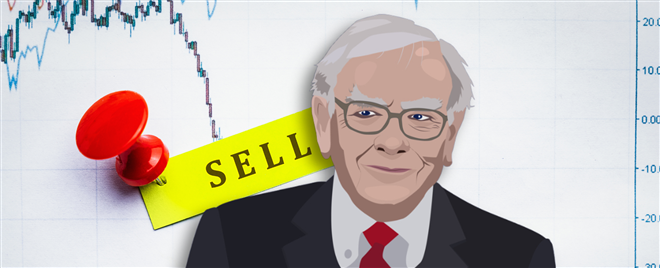Ticker Reports for November 26th
Cerence Up 155% in 2 Days: SoundHound AI's Fierce Competitor
Cerence (NASDAQ: CRNC) is an AI stock that has burst onto the radar of many investors lately. Since its latest earnings release on Nov. 21, shares have skyrocketed 155% as of the Nov. 25 close. So, what does this company do, and why am I mentioning it in the same breath as the lauded SoundHound AI (NASDAQ: SOUN)? I’ll answer those questions, as well as provide my overall view of the stock.
Cerence: AI Automotive Assistants Compete With SoundHound AI
Cerence builds AI virtual assistants with a special focus on the automobile market. Its solution aims to power conversational interactions between vehicles, drivers, and other passengers. In this market, it is a clear competitor to SoundHound AI. SoundHound's voice recognition platform targets the automotive market, too. However, SoundHound also competes in many other markets, including quick-service restaurants and customer service centers.
Cerence has a wide range of automotive customers, including original equipment manufacturers (OEMs) like Ford Motor (NYSE: F), Geely Automobile (OTCMKTS: GELYY), General Motors (NYSE: GM), and several other big names.
Changes and New Products at Cerence Spark Investor Optimism
Cerence’s stock surged post-earnings as the company beat expectations on both revenue and earnings. Revenue came in 15% above expectations, while its adjusted loss per share was just $0.07 versus expectations of a $0.38 loss per share.
Cerence’s new CEO, Brian Krzanich, is adding to the optimism. He previously held the same position at Intel (NASDAQ: INTC) from May 2013 to June 2018. During his time there, Intel stock provided a total return of over 140%, outpacing the S&P 500 by more than 50%.
In the company's earnings call, Krzanich indicates that AI and large language models have not been central to its products in the past. He said that moving forward, the vision is to have these elements built into every product in the company’s portfolio. However, this transition is already happening. The company’s Gen-AI solutions have seen 10 customer wins and six program launches in fiscal 2024.
A particularly exciting technology for Cerence is its new CaLLM Edge model. It was developed in collaboration with Microsoft (NASDAQ: MSFT). It uses an automotive-specific data set, making it ideal for communicating with one’s vehicle. Navigation, conversational interaction, and explicit car control commands are all core capabilities. This lets users adjust cabin temperature and seat position. They can also ask questions like "What's the most popular movie ever shot in Hollywood?" using their voice.
CaLLM Edge uses two language models. One is simpler and can handle certain questions when the vehicle isn't connected to the internet. The larger model can answer more complex questions when the vehicle is online. This allows users to always have access to some level of AI command capability. Automakers can choose to put one or both models into a vehicle. This is attractive because it allows them to provide a range of capabilities based on vehicle quality. For example, entry-level vehicles may only have the small model, while premium vehicles have both.
Outlook on Cerence and Final Thoughts
The company expects a 1% drop in 2025 revenue. This excludes the 2024 upfront payment for a large expiring contract. The company is switching to a more subscription-based model for its new products. It will recognize revenue over a longer period, which will likely drag down revenues in the short term.
One legitimate concern with Cerence is its debt position. The firm has $90 million in debt coming due in 2025, with only $130 million in cash and equivalents on its balance sheet. With it only projecting to generate $37 million in cash from operations in 2025, this doesn’t give it much money to play with.
Overall, Cerence is an interesting name to watch. Its new products, such as CaLLM Edge, appear exciting but are still in the early stages of generating significant revenue. The company has a 52% penetration rate in global auto production, highlighting its strong industry presence. This extensive customer base gives Cerence significant opportunities to expand the adoption of its new AI-driven solutions.
Seeing better-than-expected growth results in these new products could make this a name I would get excited about. This is especially true given that it is currently valued at around 10% of SoundHound AI’s market capitalization. This is despite having around four times more annual revenue. However, the fact that SoundHound is targeting a much larger potential market is a massive reason for this.
Blackrock's Sending THIS Crypto Higher on Purpose
It's a groundbreaking opportunity that could be poised for extraordinary gains.
The catalyst behind this surge is a massive new blockchain development…
Why Warren Buffett Is Selling: A Look at His Latest Market Moves
When the biggest minds on Wall Street decide to make a significant move in their portfolios, retail investors better pay attention and attempt to reverse engineer the thinking and reasoning behind these moves. Today, investors can look at the recent 13-F filings from the Oracle of Omaha himself, Warren Buffett.
Buffett’s view on markets is taking the long view. Still, he has no issues reducing his exposure to the markets when and if valuations stop making sense for his strategy. Such an environment came in 1999 when Buffett mentioned in a CNN interview that he had been going into cash and selling some stock in anticipation of a lost decade in the S&P 500.
The same factors that he mentioned then are present today, and more intensely, so investors can look to his selling in shares of Apple Inc. (NASDAQ: AAPL) as a symptom of these views on the overall market. However, Buffett has been selling shares of other companies with similar trends behind them. It seems he’s getting out of the consumer discretionary sector as a whole for the following reasons.
Markets May Not Repeat, But They Often Rhyme: Key Lessons for Investors
Back in 1999, a few metrics fell so out of place that Buffett considered selling out of the market. These same metrics are back, if not worse, to the levels that got Oracle to stay out of the game for a little while. Starting with corporate earnings as a percentage of the United States gross domestic product (GDP), here’s what that looked like then.
6.5% of GDP was sufficiently above the long-term 4% average for Buffett to consider the overall stock market expensive. This would then be simplified into the famous “Buffett indicator,” which measures the stock market's level to GDP as a ratio.
Today, corporate earnings look more like 11.5%, much more expensive than they were back then. Consequently, the Buffett indicator is now at an all-time high, making the levels back then seem like a shadow of today’s market. For this reason, Buffett might initially be looking to get out of some cyclical names in the market before it’s too late.
However, investors need to understand why higher corporate earnings and a higher stock market-to-GDP ratio will be troublesome in today’s economy. When Buffett issued his warning for a lost decade, inflation was on the higher end of the spectrum, and so were bond yields.
This means that, on a real (not nominal) basis, earnings per share (EPS) would have to grow above both the inflation rate and bond yields today to justify today’s S&P 500 valuations. According to analysts at Goldman Sachs, the S&P 500 won’t be able to deliver much above a 3% annualized return for the next decade.
Wall Street is confirming this theme and betting that, from today’s extended levels, EPS won’t be able to outpace inflation and bond yields by a healthy enough margin to deliver more than a low single-digit rate of return.
What Buffett Recently Sold in the Cyclical Sector and Why It Matters
Apart from selling Apple for two quarters in a row, Buffett has chosen to target some other names that depend on the consumer cycle in discretionary spending. Floor & Décor Holdings Inc. (NYSE: FND) made it to this sell list as well, a name that Charlie Munger, Buffett’s former partner, compared to Costco Wholesale Co. (NASDAQ: COST).
Expanding into the financial sector branch of the consumer space, Buffett also decided to reduce his exposure in shares of Capital One Financial Co. (NYSE: COF), understanding that consumer credit might be one of the first niches of the market to see the pains of a slowing consumer.
But Buffett didn’t stop at credit cards and simple credit trends. He also reduced his stake in Bank of America Co. (NYSE: BAC). When investors consider the hierarchy of payments, this move makes sense, as discretionary products fall first, followed by credit cards, and finally, items like car loans and mortgages.
With 10-year bond yields going up to 4.3% and inflation edging back to 2.6% right now, it seems that the future projections for the S&P 500 and these stocks will not be enough to justify Buffett's staying along for the ride.
While this doesn’t mean every investor should buy and sell like Buffett is choosing to, it does call for a second look into the market and individual holdings around this new theme.
Last chance to watch
If you missed it, my emergency election broadcast is now available - but will be removed soon
Click here to watch it now.Why Amazon Shares May Never Trade Below $200 Again
Shares of Amazon.com, Inc. (NASDAQ: AMZN) have been having a standout year, with the stock building on the 150% rally that started in 2023. Though its shares have softened slightly in recent weeks, the tech titan was hitting fresh all-time highs just earlier this month. Even with this pullback, sentiment around Amazon remains strongly bullish, especially as it hovers near the key $200 level.
Headquartered in Seattle, Washington, Amazon boasts a market cap of $2 trillion and continues to dominate the e-commerce and cloud computing space. For those of us on the sidelines, this is a stock that’s worth watching closely. As analysts increase targets and markets rally, Amazon’s days near $200 may be numbered.
Amazon's Fundamental Performance
For starters, let’s look at the company’s fundamental performance. Amazon has consistently exceeded Wall Street’s expectations for nearly two years now, with its most recent earnings report in late October serving as a prime example. The company smashed expectations with its latest earnings report, delivering both earnings per share and revenue prints that were well ahead of the consensus.
Revenue grew by an impressive 11% year-over-year while operating income surged by a remarkable 56%. This robust performance highlights Amazon’s operational strength and positions the company well, heading into what is typically its strongest quarter of the year.
Moreover, the company continues to innovate and expand its reach. Amazon Web Services (AWS) remains a key growth driver, with double-digit revenue growth and expanding margins. As we head into the last couple of weeks of the year, these metrics signal that Amazon is firing on all cylinders.
Bullish Analyst Updates Reinforce Optimism for Amazon Stock
Multiple analysts are bullish on Amazon’s trajectory, and their overwhelming optimism is hard to ignore. The teams at Needham & Co., Loop Capital, Morgan Stanley, and Wedbush are just a few of the more than a dozen that have reiterated their Buy ratings this month alone.
Loop Capital’s price target of $275 is among the highest on the Street, and from where the stock closed on Monday, Nov. 25, it points to an upside target of nearly 40%. Not bad for a $2 trillion giant. Analysts have been quick to applaud Amazon’s recent results, with many highlighting its improving profitability and strong cash flows as reasons to stay bullish.
Notably, no bullish rating from the past two months has a price target below $200, underscoring the widespread confidence that Amazon shares are set to continue rallying for the foreseeable future.
Potential Concerns for Amazon: Rising Costs and Competition
While Amazon's outlook is overwhelmingly positive, it’s important to consider some potential risks. Rising competition in the e-commerce space and increasing costs could put pressure on margins, and for these reasons, Wells Fargo recently urged caution with an Equal Weight rating.
Additionally, regulatory scrutiny remains a wildcard. Reports suggest Amazon could face a European Union antitrust investigation next year, with potential penalties looming. But again, these challenges are almost par for the course for tech titans, and based on recent price action, investors don’t seem overly concerned.
Getting Involved
From a technical perspective, it’s important to note that Amazon’s uptrend remains very much intact despite the stock falling by as much as 10% in the past fortnight. This was a good thing as it relieved some pressure on Amazon’s Relative Strength Index (RSI). This is currently sitting at 53, indicating plenty of room for the stock to start moving higher again before even coming close to entering overbought territory.
Investors should look at further gains heading into the rest of the year, particularly with broader market conditions working in Amazon’s favor. The S&P 500 is flirting with all-time highs, and the Fed’s recent interest rate cuts are fueling a risk-on sentiment that should continue to benefit stocks like Amazon. Let’s see how the stock trades heading into Thanksgiving weekend; based on the current sentiment, don’t be surprised if it never trades below $200 again.






0 Response to "🌟 Cerence Up 155% in 2 Days: SoundHound AI’s Fierce Competitor"
Post a Comment